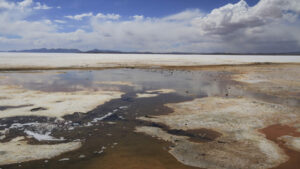Vulcan starts-up pilot lithium extraction plant in Germany

Vulcan's pilot lithium plant is off the blocks. Pic: Getty Images
With lithium prices surging this month, the time seems right for Vulcan Energy Resources (ASX:VUL) to power ahead at its Zero Carbon Lithium project in Germany’s Upper Rhine Valley with the start-up of its pilot lithium extraction plant.
That it took the company less than six months to design, build and commission the pilot plant – a process enabled by its world-class technology partners and location in Germany – highlights the aggressive schedule that it has embraced.
The pilot plant is aimed at demonstrating direct lithium extraction (DLE) from live geothermal brine produced from existing wells.
Work will be focused on demonstrating pre-treatment and DLE processes, as well the durability of the process over hundreds of cycles, which will feed into the company’s definitive feasibility study.
Data from the plant will be used to finalise the design of a larger demonstration plant that will also contribute to the DFS.
Managing director Dr Francis Wedin said that getting the pilot plant running is a significant milestone and that data needed for de-risking the lithium extraction process is already being produced.
Vulcan aims to produce battery-quality lithium hydroxide from hot, sub-surface geothermal brines in Germany, conveniently allowing the use of geothermal renewable byproduct to meet its processing energy needs.
Vulcan Energy Resources (ASX:VUL) share price chart
Meanwhile, Galileo Mining (ASX:GAL) noted that independent electromagnetic modelling of a priority conductor at the Delta Blues nickel-copper prospect in Western Australia’s Fraser Range region has confirmed the target location.
The prospect has a strike length of between 350m and 500m, and a depth extent between 250m and 500m. Depth to the top of the conductive source has been estimated at between 125m and 185m below surface.
All modelled parameters indicate that Delta Blues is a sizeable conductive body that may be related to sulphide mineralisation.
The company plans to carry out drilling to determine what is in the ground while regional electromagnetic surveying continues to cover large areas of ground with the goal of identifying additional high-quality targets for drilling.
Galileo Mining (ASX:GAL) share price chart
Related Topics

UNLOCK INSIGHTS
Discover the untold stories of emerging ASX stocks.
Daily news and expert analysis, it's free to subscribe.
By proceeding, you confirm you understand that we handle personal information in accordance with our Privacy Policy.








